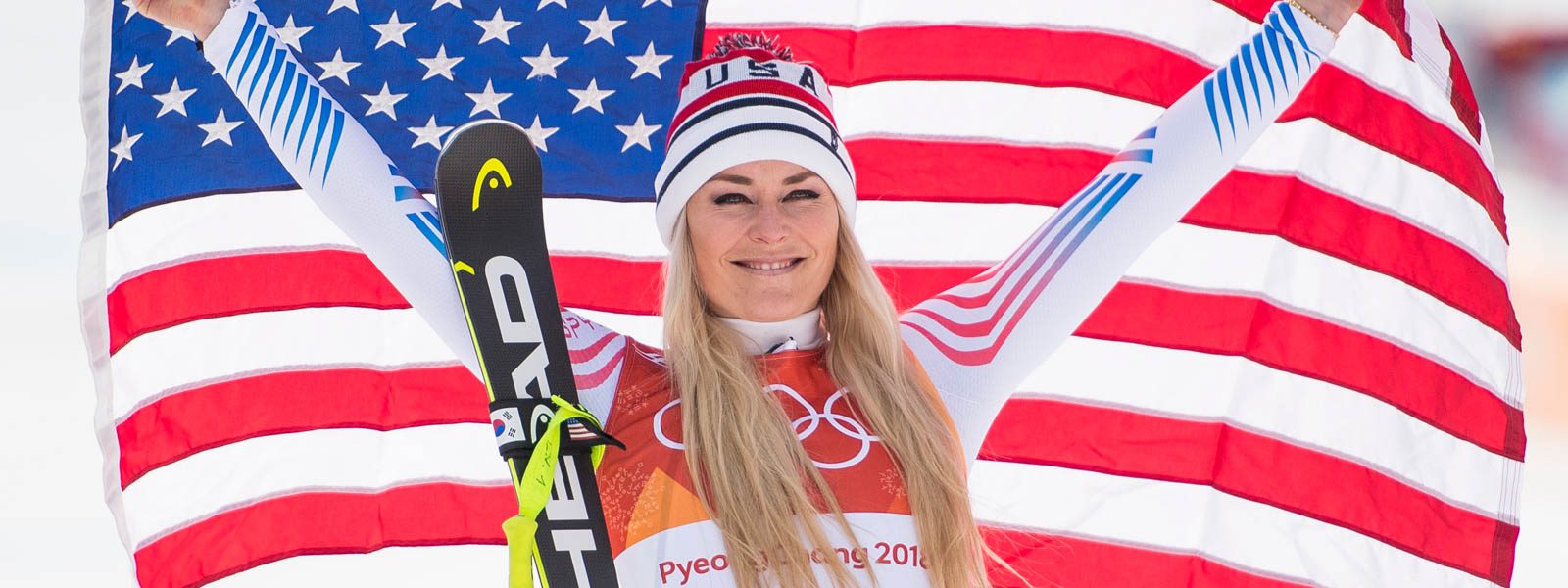Morgan: Parallel download … What went right in Lech/Zürs?
From the couch potato perspective, the show from Lech/Zürs was a win for ski racing. Perhaps the main thing that stood out, relative to other competitions, was that the racers were clearly having fun both competing and cheering each other on. Even without the crowd, the mood was upbeat and energizing. It made you want to be there, catching an evening at the races in the “cradle of alpine skiing,” where it all started.
What stayed the same?
The pros of parallel remain unchanged, as discussed in Ski Racing here and in other articles at length: the head-to-head format, where the first racer to cross the line wins, is easier for viewers to understand; the hill location makes it more accessible to in person crowds (when we can have those again); the compact venue allows many more potential host sites; night competitions, especially when they are gladiator-like eliminations, are crowd pleasers.
So there’s all that from the “event marketing” side.
From the pure athletic perspective, parallel racing is a uniquely challenging physical and mental marathon. Advancing through the rounds demands discipline and stamina in both. If you can get past the challenge of keeping your cool despite the distraction of someone breathing down your neck, you then have to be able to adjust tactics run to run and course to course as conditions change. And you have to do all that better, and faster, than the person next to you.

Those not psyched with parallel (and they will surface in the comments on any article about the format) rightly point out that the course itself is no match, in length or difficulty, for a standard World Cup race. But one run, even on a relatively easy course is very different from one run on that same course with a close competitor gunning hard next to you; doing that 10 times takes it another order of magnitude beyond that level of difficulty.
What changed?
The event at Lech/Zürs reflected adjustments to the format based on safety and fairness issues that surfaced in last year’s World Cup parallels. Here’s how it rolled
Keeping the distance
The distance between courses, at 10 meters, created the needed space to minimize interference while still showing the drama of side-by-side competition.
Reruns for all
Chief Race Director for the Men’s World Cup Marcus Waldner notes that “with the run rerun format, which is actually the basic philosophy of the Parallel event when it was born more than 40 years ago [in World Pro Skiing], there is no more discussion about fairness, and if the red course is faster than the blue one.”
Going down swinging
Parallels that are set too straight end up being a pretty uninteresting drag race. The GS set, with significant swing, demanded solid skiing and quick switches. It favored skiers with a wide-ranging skill set, vs pure GS or SL skiers, or skiers of a certain (tall) stature. Which leads us to…
Adios, cross blocking!
Hallelujah. This may be the single best thing for fairness, safety and viewing alike. No longer is parallel for towering athletes only. No longer will athletes have to contend with a panel in the face that obstructs their vision while mowing over a gate. No longer will youth ski coaches have to watch their kids abandon all technical fundamentals to cross-block like their World Cup heroes.
Full gas
With only 16 qualifying for the main event, based on time, there is no gamesmanship. The only way to qualify is to hit the gas, and even some tops skiers failed to make the cut. It is definitely an advantage to be matched with a faster skier, because we instinctively let up when the pressure is off.
View this post on Instagram
Going the Distance is a World Class Test
As we saw throughout the TV-friendly 1 ½ hour competition, advancing through the rounds demanded rock solid technique. An errant arm, or additional movement that made an athlete late or off balance was not forgiven. Neither was the slightest lapse in concentration, as evidence by exciting wins squeaked out in the final gates. The gateway to maintaining flawless technique, tactics and intensity through ten runs was fitness. Petra Vlhova, not exactly a whiner or a wimp, was admittedly smoked by the end.
Results say it all
At the end of each evening, nobody could take issue with who stood on either the men’s or women’s podium. The format incentivized the rookies to throw down and shine on clean courses, but also demanded the composure, fitness and tactics of a seasoned vet to win.
Jumps? What jumps?
The thin snow conditions at Lech/Zürs did not allow for a jump to be built into the hill safely, but Waldner anticipates they will be part of future events to “create a bit more action.”
What’s next?
The loose plan is that Parallel—now all GS— settles into some venues on the tour that best accommodate and showcase the format (e.g., Alta Badia for men, St Mortiz for women) to establish classic events.
The next parallel, and the only other one this season, will be at the World Championships in Cortina. It will feature men and women together on the same day, as originally intended. Waldner explains that the longer breaks in the semifinals will then be filled with rounds of the opposite gender, rather than rounds to rank 5 to 8, making it easier for spectators and viewers at home to understand: “This is one of the main topics of this event: head-to-head competitions are easy to understand and people can enjoy watching.”
Have some thoughts on parallel? Send a letter to the editor. If it’s good, we’ll publish it.





















